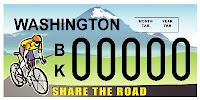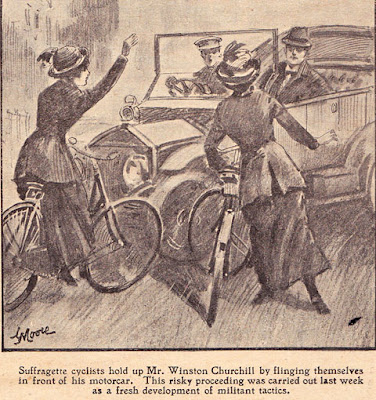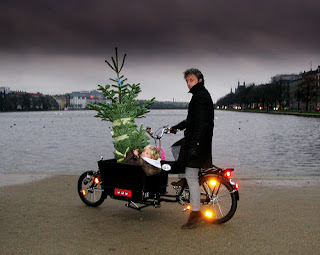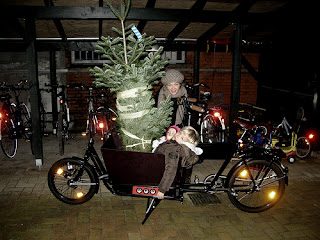In many ways, if HB1018 passes, it will set a new gold standard for the way a state vehicle code treats cyclists – possibly the first such major overhaul since the 70s. Significantly, while putting the cyclists perspective front and center, it is overtly multi-modal and reflective of the complete streets era.
Demonstration bike loading policy in downtown Seattle to become permanent
Last February, King County Metro dropped its restriction on loading bikes on buses at transit stops in downtown Seattle’s Ride Free Area as a demonstration policy. Since an evaluation of this demonstration policy reveals that there have been no problems with safety, operation, or on-time performance, this policy becomes permanent next month.
A big thanks to Metro for making this a permanent policy. Washington Bikes and Cascade Bicycle Club have advocated for this policy change for many years, and it’s rewarding to have this loading restriction eliminated. The Bicycle Alliance helped with community outreach on this policy change. We have also provided information on how to load/unload bikes on buses and have had a demo rack available to practice on in our BikePort facility.
Clark County Passes Bicycle and Pedestrian Plan
Today’s post was submitted by Brendon Haggerty, who regularly bike commutes from his home in Portland to his job in Clark County.
The Great Helmet Debate
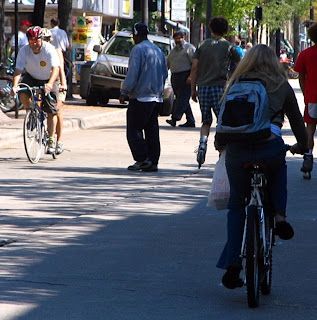 |
| pedbikeimages.org/Dan Burden |
Do you wear a helmet when you ride? Should you wear a helmet when you ride? Should the government poke its nose in with helmet laws? Do helmets really improve safety or, more importantly, crash survival?
The recent Grist article “Helmet Wars: A gripping account of the great bicycle helmet campaigns” begins to explore some of the sides of this issue, and provides a number of links to excellent resources on both sides. Check it out, and tell us where you land on the helmet issue.
Whether you think bicyclists should or shouldn’t wear helmets, make sure to follow the law in your area. Washington has spotty mandatory helmet laws, which vary by region. Check this WSDOT list if you aren’t sure whether you’re in a mandatory helmet region or not. And if helmets strike you as oh-so-uncool, you can always follow Momentum Magazine‘s instructions for how to turn your helmet into two different kinds of mohawks (zip tie or fuzzy).
Staff Transitions: Hellos and Goodbyes
| John Vander Sluis |
If you’ve phoned or dropped by our office recently, you’ll know the Bicycle Alliance has had some staff transitions. We are pleased to welcome John Vander Sluis and Jay Steingold as the new kids on the block.
| Jay Steingold |
2010 has been a year of milestones for Jay Steingold. He got married in May, graduated from the University of Washington in June, did a cross-country road trip for two months, then landed at the Bicycle Alliance office last week.
| Katie Ferguson |
In November, Katie Ferguson completed her AmeriCorps internship with us. Katie developed a Volunteer recruitment and management program for us. Since the completion of her internship, Katie has done some contract work for the Bicycle Alliance. You can read Katie’s blog post about her year with us.
Go by Bike: Bicycle Boulevards
 |
| Berkeley bike boulevard. |
During a visit to the San Francisco Bay area in 2006, I spent a transformational day traveling around Berkeley on bike boulevards. It was my first experience using an interconnecting network of bike boulevards and I was hooked.
Bike boulevards are city streets—usually residential streets with low and slow traffic– that have been modified to give bicycle travelers priority. Berkeley clearly marks its bike boulevards with large pavement markings and easy-to- spot directional signs, making it pretty easy to navigate my way around town.
 |
| streetfilms.org/Sarah Syed |
The real appeal of bike boulevards for me–and I suspect for many other folks–is that they are pleasant places to ride. I traveled all around Berkeley using quiet residential streets and passing through interesting neighborhoods. I visited parks, small business districts, the college campus and the bay following the bike boulevard network.
 |
| Cars must turn but bikes can go straight. |
Although the bike boulevards used streets that are open to all, techniques are employed to discourage through traffic except bikes. Berkeley’s bike boulevard streets have diverters that direct motorized vehicles off the street every few blocks.
At an arterial intersection, cars were again directed to turn right but I queued up in a bike lane that allowed me to continue forward. A pavement marking shows where to position your bike to ensure that the traffic signal detects you.
 |
| Cyclist waits in lane to cross arterial. |
Bike boulevards are gaining traction across the country. Besides Berkeley, you can find these facilities in Portland (OR), Madison (WI), Tuscon (AZ) and Wilmington (NC) to name a few. In Washington State, the cities of Seattle, Spokane and Tacoma have identified bike boulevards in their bike plans.
Info on Berkeley’s bike boulevard network can be found on the City’s website. Check out this StreetFilms video about Berkeley’s bike boulevard network.
Show your support for cycling: Attend Transportation Advocacy Day on February 10 in Olympia
Question: What’s the best thing you can do on a Thursday in February?
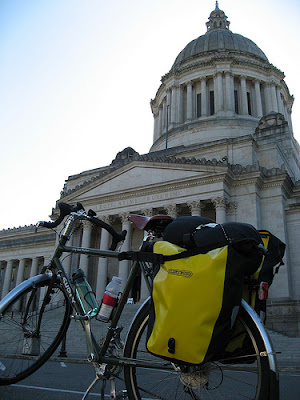 |
| (From Kevin P’s Flickr photostream) |
